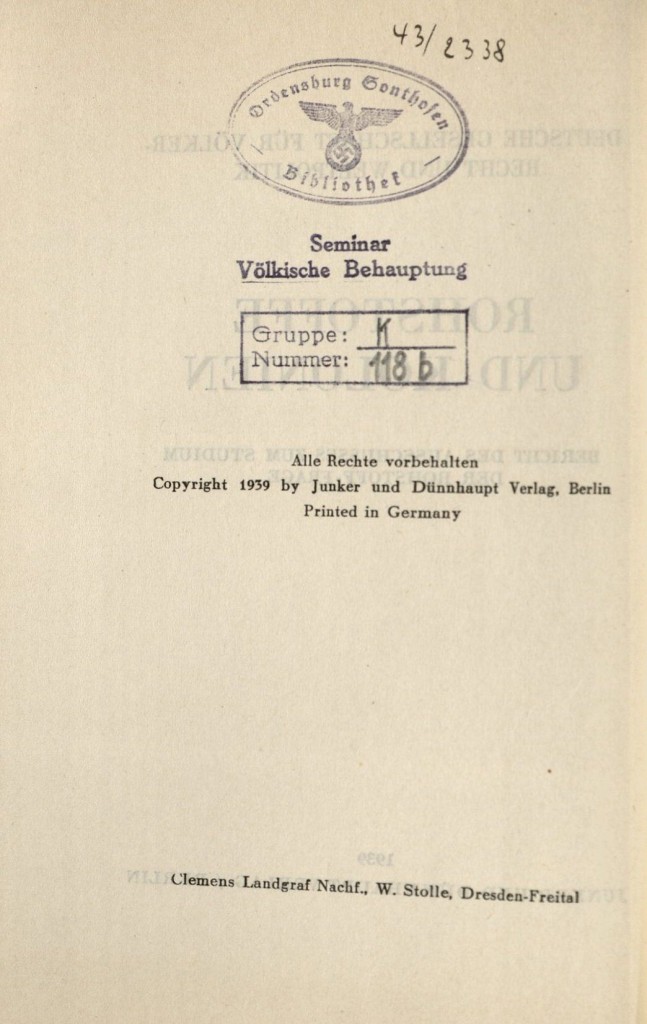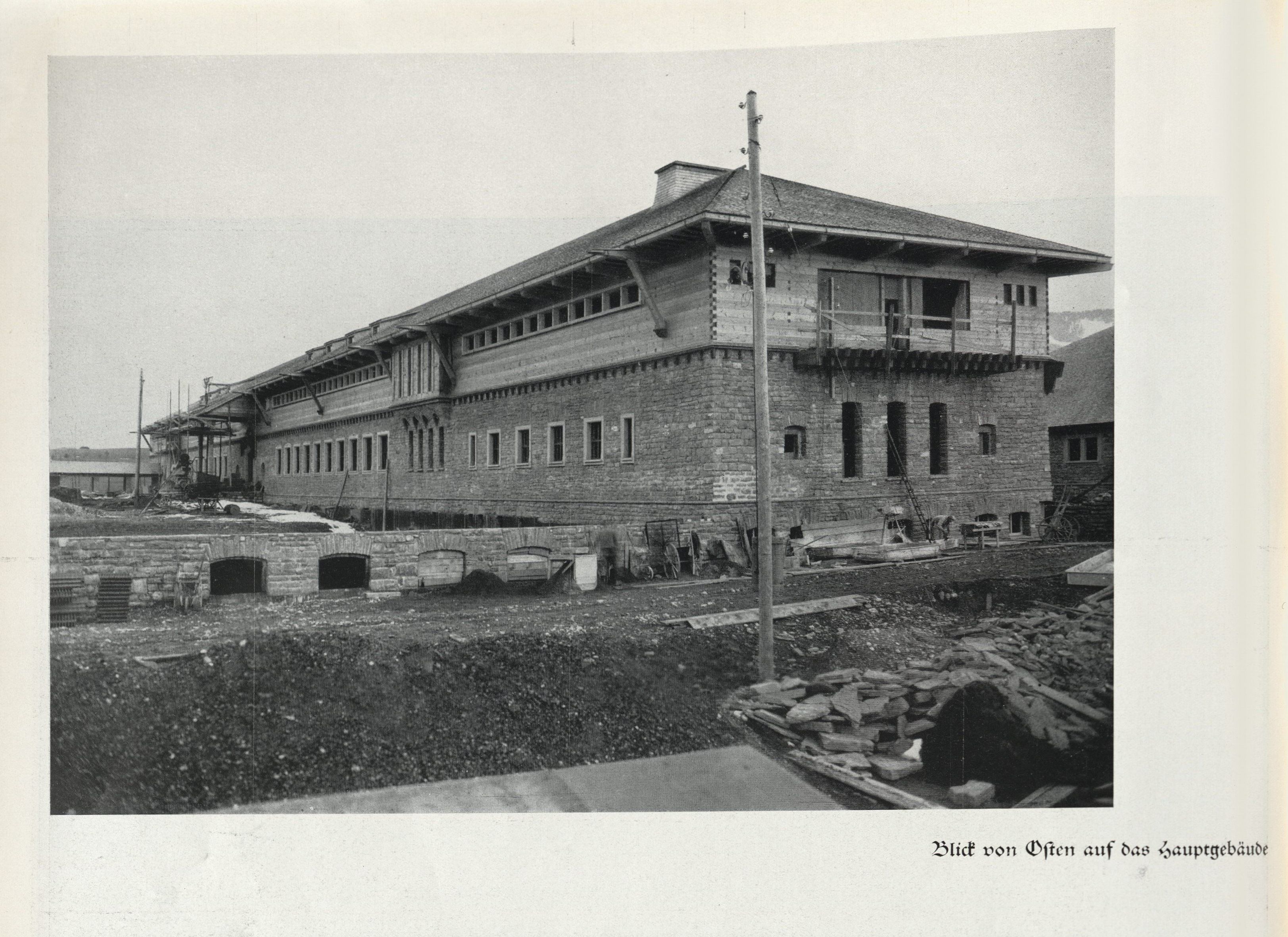A grim symbol is stamped inside nearly 60 books at the Rubenstein Library: the eagle and swastika; symbols of the German Nazi Party. The markings also indicate that the volumes belonged to “Ordensburg Sonthofen.” What was this place, what constituted its library, and furthermore, what happened to its holdings?

In 1933, the same year Adolf Hitler’s party came to power, the Ordensburgen were built as elite training facilities for high-ranking officers in the military called Junker. The program was under the direction of Robert Ley, and the purpose of instruction was, as he stated in Der Weg zur Ordensburg, for the “spiritual and philosophical education of the NSDAP.” Qualifying candidates between the ages of 25 and 30 were sent to three facilities and spent a year at each: Vogelsang in the Eifel, Krössinsee in Pomerania, and Sonthofen in Allgäu. Each facility had its own training focus. The focus of instruction at Sonthofen, intended to be the third and final year of training, was diplomacy and administrative tasks. The libraries at each location would have facilitated such research and instruction.

Although the exact story of how Sonthofen’s books ended up at the Rubenstein is unknown, Nazi-related material did come to the United States through the efforts of the Library of Congress and were then distributed to institutions throughout the country, including Duke University. The program was called the “Cooperative Acquisitions Project for Wartime Publications,” and details about the program can be found in Volume 16, number 2 of the Duke University Libraries magazine. Parts of German libraries and archives, if not destroyed outright at the end of the war, were broken up and distributed. Tracking down the remainders of the collections, which can be aided by the ownership stamps, and analyzing the content, is invaluable for understanding the operations of facilities such as Sonthofen.

Analyzing the stamps and markings in the Rubenstein’s collection can help to at least partially recreate the library at Sonthofen and give insight into its functioning. Some books are marked “Hauptbücherei” (main library), while others are marked with specific group or class designations such as “Seminar Völkische Behauptung” (racial assertions). This shows, for example, that the instruction at Sonthofen was not strictly limited to understanding military strategy. Titles in the collection also indicate a variety of subjects, including Was wir vom Weltkrieg nicht wissen (What We Don’t Know About the World War), a justification of rapid militarization after World War I, and Der Wille zum Kind (The Will to Child), part of a series called “Political Biology,” which encourages procreation to build the perfect Aryan race.
The opening of Vogelsang in 2006, held until then by the Belgian military, created the opportunity to investigate the ultimate destination of its library. For example, Michael Schröder (article in German) reveals that of what is thought to be almost 70,000 items, 40,000 were probably plundered or destroyed, and the rest ultimately ended up at the University of Bonn. The opportunity is here for a similar investigation to be conducted regarding Sonthofen, also now a historical site, and its 57 books held by the Rubenstein present a window to view its history. This material is also just a small part of the rich German language holdings at the Rubenstein Library, which also include the extensive Harold Jantz collection.
Post contributed by Sarah Carrier, Research Services Coordinator


